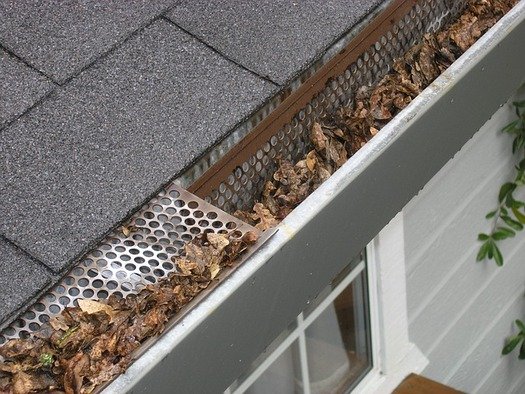Keeping your home clean is not just about appearances; it’s about creating a healthy and safe environment for you and your loved ones. Often overlooked, the cleaning tools we use play a pivotal role in maintaining the cleanliness of our living spaces. In this blog post, we’ll explore the 10 vital reasons why properly cleaning and storing your cleaning tools is a game-changer. From extending their lifespan to contributing to a healthier indoor atmosphere, these practices are simple yet impactful, ensuring that your cleaning routine goes beyond the surface and truly transforms your home into a haven of cleanliness and well-being.
Here is our post on The Importance of Properly Cleaning and Storing Your Cleaning Tools
1. Enhanced Cleaning Performance
Properly cleaned tools ensure your cleaning efforts yield the best results. When tools like brooms and mops are free of dirt and grime, they can efficiently pick up dust and leave your floors sparkling clean.
2. Extended Lifespan
Regular cleaning and proper storage can significantly extend the lifespan of your cleaning tools. By preventing unnecessary wear and tear, you save money in the long run by reducing the need for frequent replacements.
3. Healthier Living Spaces
Dirty tools can become breeding grounds for bacteria and mold, posing health risks to you and your family. Regular cleaning minimizes these risks and contributes to a healthier living environment.
4. Improved Safety
Dirty or damaged tools can compromise safety. A well-maintained mop or broom is less likely to cause accidents, ensuring a safer cleaning experience.
5. Time and Effort Savings
Clean tools work more efficiently, reducing the time and effort needed for your cleaning tasks. This is particularly beneficial for those with busy schedules who want effective and quick cleaning solutions.
6. Prevention of Cross-Contamination
Dirty tools can transfer contaminants from one area to another, spreading germs instead of eliminating them. Proper cleaning helps prevent cross-contamination in your home.
7. Better Indoor Air Quality
Dust and allergens can accumulate on cleaning tools, contributing to poor indoor air quality. Regular cleaning prevents the release of these particles into the air, promoting a cleaner and healthier atmosphere.
8. Cost-Effective
Investing time in cleaning and storing your tools is a cost-effective strategy. Regular maintenance reduces the need for frequent replacements, saving you money in the long term.
9. Environmentally Friendly
Properly cleaning and storing your tools also contribute to environmental sustainability. By extending the lifespan of your tools, you reduce the overall waste generated by frequent replacements.
10. Enhanced Aesthetics
Clean tools not only perform better but also contribute to a more aesthetically pleasing home. Tidy and well-maintained cleaning tools make your cleaning routine more enjoyable and visually appealing.
See also our post on 10 Essential Cleaning Tools Every Homeowner Should Own
Everything You Need to Know About Properly Cleaning and Storing Cleaning Tools
1. Brooms and Dustpans
Cleaning Steps:
- Regularly remove debris from bristles.
- Wash with mild soap and water.
- Allow to air dry.
Storage Tips:
- Hang brooms upside down to maintain bristle shape.
- Store dustpans in a clean, dry area.
2. Mops and Buckets
Cleaning Steps:
- Rinse mop heads thoroughly after each use.
- Wash mop heads with detergent and allow them to dry completely.
- Clean buckets with a mixture of water and disinfectant.
Storage Tips:
- Hang mop heads to dry completely.
- Store buckets upside down to prevent water accumulation.
3. Vacuum Cleaners
Cleaning Steps:
- Empty the dustbin regularly.
- Clean or replace filters as needed.
- Check for blockages in the hose.
Storage Tips:
- Store vacuum cleaners in a cool, dry place.
- Secure cords to prevent damage.
4. Sponges and Scrub Brushes
Cleaning Steps:
- Rinse sponges thoroughly after use.
- Sanitize by microwaving or soaking in a mixture of water and vinegar.
- Clean scrub brushes with warm soapy water.
Storage Tips:
- Allow sponges and brushes to air dry completely.
- Store in a well-ventilated area.
5. Microfiber Cloth
Cleaning Steps:
- Launder microfiber cloths in warm water with mild detergent.
- Avoid using fabric softeners.
Storage Tips:
- Store microfiber cloths in a clean, dry place.
- Avoid mixing with dirty tools.
6. Spray Bottles
Cleaning Steps:
- Rinse and clean spray bottles regularly to prevent clogs.
- Use a mixture of water and vinegar to disinfect.
Storage Tips:
- Store spray bottles with the nozzles facing upward to prevent leakage.
7. Gloves
Cleaning Steps:
- Wash gloves with mild soap and water after each use.
- Allow gloves to air dry thoroughly.
Storage Tips:
- Hang gloves upside down to ensure proper ventilation.
- Prevent moisture buildup.
8. Dusters
Cleaning Steps:
- Shake out dust from dusters regularly.
- Launder if applicable.
Storage Tips:
- Store dusters in a clean, dry place, away from direct sunlight.
See also our post on Cleaning Tips for People with Allergies
Conclusion
In the hustle and bustle of daily life, it’s easy to underestimate the importance of caring for our cleaning tools. However, as we’ve discovered, the benefits of proper cleaning and storage extend far beyond a sparkling surface. When incorporating these practices into our cleaning routines, we not only ensure the efficiency and longevity of our tools but also contribute to a safer, healthier, and more environmentally friendly home. So, the next time you pick up that broom or sponge, remember that a little extra care goes a long way in creating a space that is not only visually appealing but also fosters well-being for everyone under its roof. Clean tools, after all, pave the way for a cleaner and brighter life.














